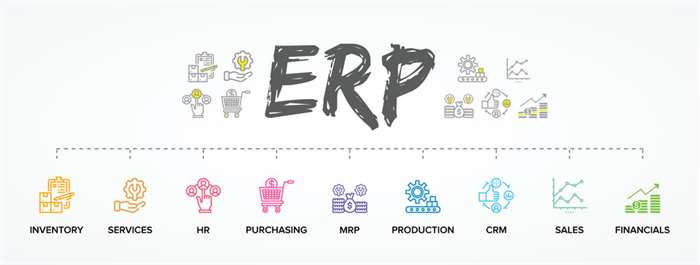What’s Systems Development Life Cycle
Many organizations tend to spend few efforts on testing whereas a stronger focus on testing can save them lots of rework, time, and money. The system analyst is an individual who’s thoroughly conscious of the system and guides the system improvement project by giving correct instructions. He is an skilled having technical and interpersonal abilities to hold out improvement tasks required at every phase.
Mostly used for creating and delivering a wide range of ideas, this mannequin completely matches the purchasers who don’t have a clear idea or imaginative and prescient of what their ultimate product should look like. It permits common incorporation of feedback, which significantly reduces the time and costs required to implement modifications. As a rule, these features assist to finalize the SRS document in addition to create the primary prototype of the software to get the overall idea of the way it ought to seem like. Fundamentally, SDLC trades flexibility for control by imposing construction.
This document shapes the strict laws for the project and specifies the precise software program mannequin you will eventually implement. Once the planning is done, it’s time to modify to the research and analysis stage. An output artifact does not have to be completely outlined to serve as input of object-oriented design; evaluation and design may happen in parallel. In apply the results of one exercise can feed the other in an iterative process. Around seven or eight steps seem generally; nonetheless, there may be anywhere from five upwards to 12. Typically, the extra steps outlined in an SDLC model, the extra granular the phases are.
Thus, it is important to implement SDLC since it helps to convert concepts of projects into practical and fully operational buildings. Apart from overlaying https://www.globalcloudteam.com/ varied technical features concerning system development, SDLC is efficient for

This helps to estimate prices, benefits, useful resource necessities, and particular user wants. Relevant questions include whether or not the newly carried out system meets necessities and achieves project objectives, whether the system is usable, reliable/available, correctly scaled and fault-tolerant. Process checks embrace review of timelines and expenses, as properly as consumer acceptance. Many of those fashions are shared with the event of software, corresponding to waterfall or agile. Numerous model frameworks can be tailored to suit into the event of software.
Phases
The Spiral model best fits large initiatives the place the danger of issues arising is excessive. Changes are handed via the completely different SDLC phases repeatedly in a so-called “spiral” movement. The final but not least necessary stage of the SDLC course of is the maintenance stage, the place the software program is already being utilized by end-users. Ready to maximize the efficiency of your systems development life cycle? After coaching, systems engineers and developers transition the system to its manufacturing surroundings. It also helps point out how these needs could be met, who will be responsible for sure elements of the project, and the timeline that ought to be expected.
For occasion, if creating strong documentation is important for a shopper, it’s higher to choose a waterfall or V-shape conceptual mannequin. In case a priority is quick attending to the market, then a RAD or agile SDLC methodologies will be a extra suitable choice. This high-risk SDLC mannequin throws most of its assets at growth and works greatest for small projects. It lacks the thorough requirements definition stage of the opposite strategies.
This approach to software development is structured and risk averse, designed to manage large projects that embrace multiple programmers and techniques. It requires a transparent, upfront understanding of what the software is meant to do and isn’t amenable to design adjustments. This strategy is roughly much like an assembly line process, where it is clear to all stakeholders what the end product should do and that major changes are tough and costly to implement. Various definitions of the SDLC methodology exist, but most comprise the following phases.
What Is System Improvement Life Cycle In Mis?
All events agree on the aim upfront and see a clear plan for arriving at that goal. It’s also necessary to know that there’s a robust give consideration to the testing phase. As the SDLC is a repetitive methodology, you must ensure code quality at each cycle.

Oftentimes, growth groups aren’t involved on this SDLC stage for the reason that shopper starts on the lookout for programmers when the product imaginative and prescient already exists. The estimation
What’s A System Improvement Life Cycle Security Testing Provider?
However, the Agile model’s flexibility is most well-liked for complex tasks with continually changing necessities. The most flexible of the SDLC fashions, the spiral mannequin is similar to the iterative mannequin in its emphasis on repetition. The spiral model goes through the planning, design, build and check definition of systems development life cycle phases time and again, with gradual improvements at every pass. However, unlike conventional software development that addresses security as a separate stage, SDLC addresses security every step of the best way via DevSecOps practices.
feasible from monetary, organizational, and technological points of view and units a deadline wanted to bring the idea to actuality. The system improvement life cycle or SDLC is a project management model used to outline, design, develop, test, and deploy an info system or software program product. In different words, it defines the mandatory steps needed to take a project from the thought or idea stage to the actual deployment and additional maintenance. System Design is an important stage in the SDLC because it bridges the hole between requirements evaluation and system growth.

The largest downside of this model is that small details left incomplete can hold up the whole course of. Systems Development Life Cycle is a scientific strategy which explicitly breaks down the work into phases which would possibly be required to implement either new or modified Information System. Again, since SDLCs make the most of intensive paperwork and guideline paperwork, it’s a group effort and losing one even a serious member will not jeopardize the project timeline. SDLC fashions can therefore help projects to iterate and enhance upon themselves time and again till essentially excellent. The information system shall be integrated into its setting and finally installed. After passing this stage, the software program is theoretically prepared for market and may be offered to any end-users.
Design Stage – What’s Going To The Completed Project Look Like?
The Agile model prioritizes collaboration and the implementation of small changes based on regular feedback. The Agile mannequin accounts for shifting project requirements, which can turn out to be apparent over the course of SDLC. It is important that you have contingencies in place when the product is first released to market ought to any unexpected points come up. Microservices architecture, for example, makes it straightforward to toggle options on and off. A canary release (to a restricted number of users) may be utilized if necessary.
- Training normally covers operational training for help employees as well as end-user coaching.
- However, many organizations choose to maneuver the product via completely different deployment environments such as a testing or staging environment.
- After coaching, systems engineers and developers transition the system to its production setting.
- System improvement life cycles are sometimes used when developing IT tasks.
- But
Through maintenance efforts, the group can add new capabilities and options and meet new necessities set by the consumer. This section also includes the precise set up of the newly-developed application. The project is put into manufacturing by shifting all parts and information from the old system and placing them in a model new one via a direct cutover. The second SDLC part is where groups will work on the root of their problem or want for a change.
They are used for the quick creation of a quantity of early-stage working prototypes, which might then be evaluated. AI monitoring instruments ensure that greatest practices are rigorously adhered to. Their commitment to delivering high-quality work has been excellent. “Let’s get this nearer to what we would like.” The plan virtually by no means seems perfect when it meets actuality. Further, as situations in the real world change, we need to update and advance the software program to match. This permits any stakeholders to securely play with the product earlier than releasing it to the market.
At the deployment stage of a software program improvement life cycle, a completed product is rolled out in a manufacturing setting. It is either released to be downloaded by end-users or put in on the client’s premises and ready to begin out working there. The systems improvement life cycle originally consisted of 5 phases as a substitute of seven. These included planning, creating, growing, testing, and deploying.
- 7 de março de 2023
- 25
- Software development
- Comentários desativados em What’s Systems Development Life Cycle


Comentários